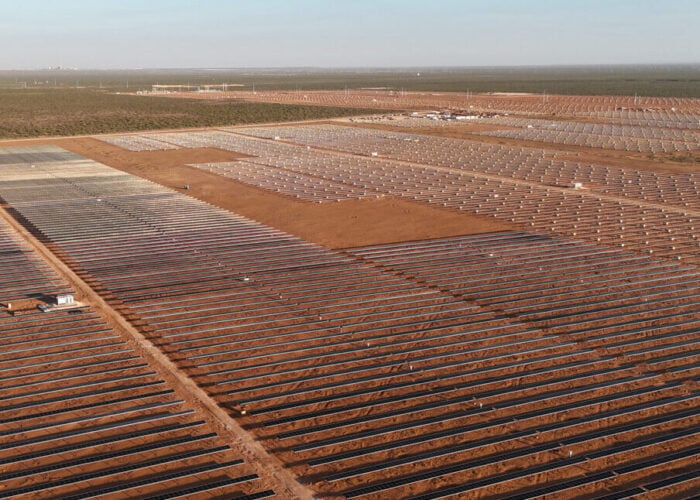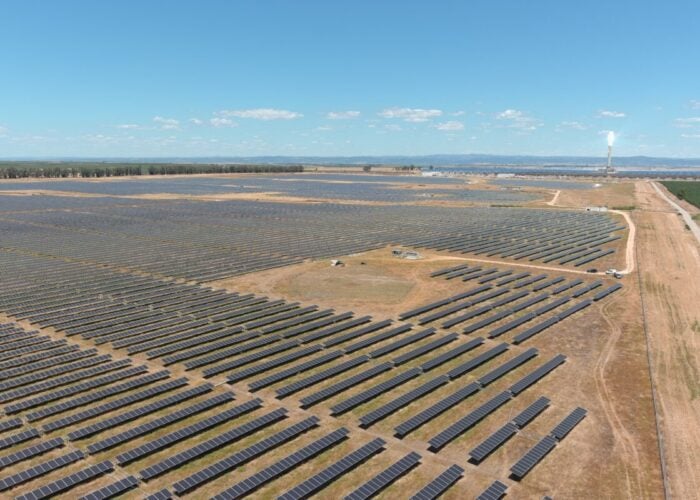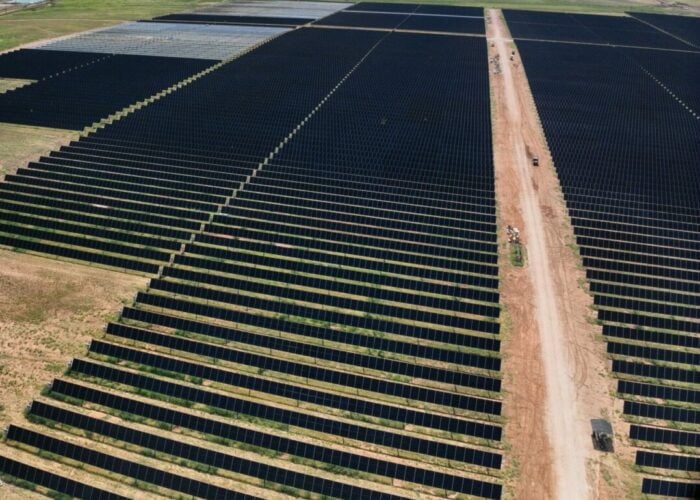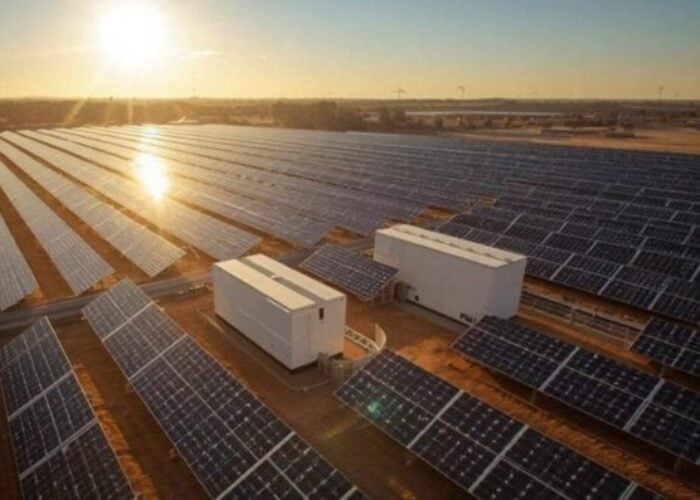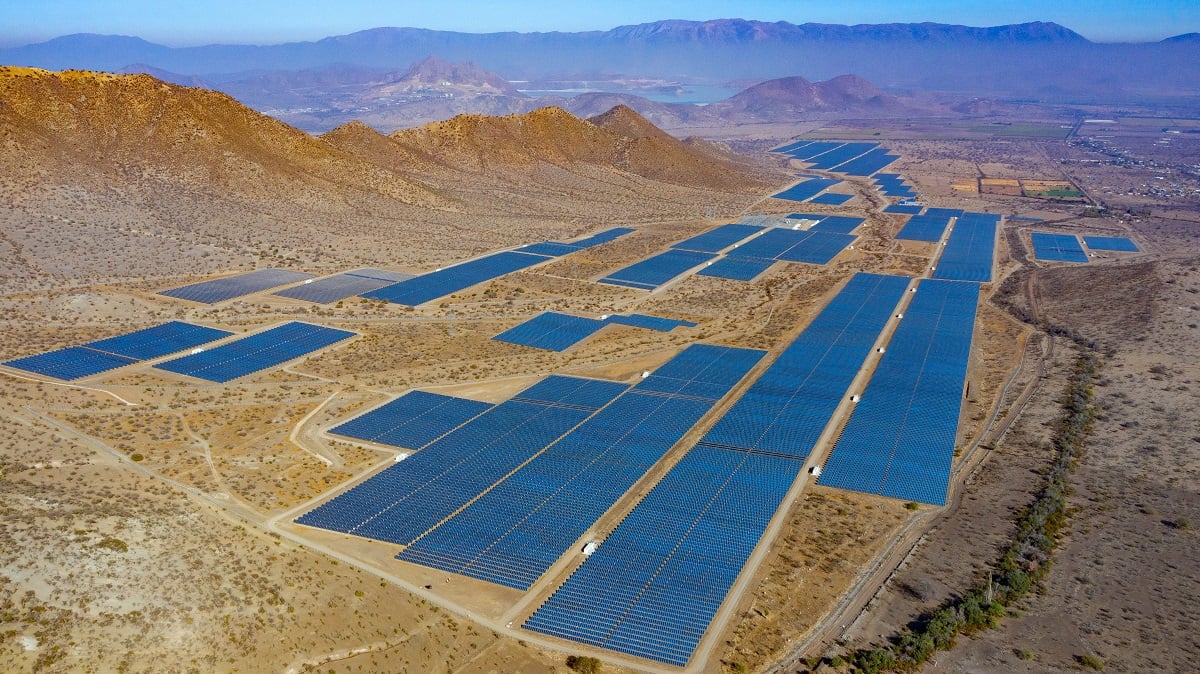
Chile boasts some of the sunniest places on earth, with areas like the Atacama Desert in the north of the country getting almost 356 days of clear skies. Coupled with high solar radiation and low humidity this makes it one of the best areas in the world for solar PV.
The country is “blessed” with vast amounts of sunlight said José Ignacio Escobar, Acciona’s director of energy for South America.
Try Premium for just $1
- Full premium access for the first month at only $1
- Converts to an annual rate after 30 days unless cancelled
- Cancel anytime during the trial period
Premium Benefits
- Expert industry analysis and interviews
- Digital access to PV Tech Power journal
- Exclusive event discounts
Or get the full Premium subscription right away
Or continue reading this article for free
“The country has a healthy and stable long-term investment climate as well as a growing and sustained electricity demand, ambitious decarbonisation targets and a heavy dependency on imported fossil fuels. For all of these reasons, Chile is leading Latin America’s clean energy revolution.”
In an effort to diversify its energy sector, to drive decarbonisation and increase security, Chile began to move away from hydro-electricity and thermal generation at the beginning of the decade. In 2008, the government brought in a requirement for energy companies to include at least 5% of their generation from non-conventional renewable energy sources by 2010.
This first step proved successful, with 7% of the country’s electricity coming from renewables by 2012. From this point it has seemingly gone from strength to strength, with the Chilean government then setting a target of 20% renewable energy by 2025.
As of today, the country has already hit this target, with the total share of wind, solar, biomass, geothermal and run-of-river averaging a 20% of the total electric energy produced according to the Asociación Chilena de Energías Renovables y Almacenamiento (ACERA), the country’s renewables trade association. This includes peaks of 45% at certain times of year, driven in particular by the booming solar sector.
Chile is now aiming to be 100% renewable by 2050, but challenges remain, not least with ensuring the energy can reach areas of demand.
PV Tech publisher Solar Media is hosting its inaugural Energy Storage Latin America event later this month, bringing together key industry stakeholders as the region looks to accelerate its adoption of energy storage. More details on the event, which is now being hosted digitally, can be found here.
Falling costs, resource wealth and PPAs
Chile’s first solar plant – a 3MW project – was installed in 2012. Now – just eight years down the line – there is 2,945MW of PV operating and a further 2,845 MW under construction, according to ACERA.
This growth has been driven by dramatic reductions in price. Atlas Renewable Energy’s general manager for Chile Alfredo Solar explained that in his experience, when the solar industry first started in Chile nearly a decade ago, the levelized cost of electricity (LCOE) stood at US$100/MWh. This has fallen to almost US$20/MWh, a fifth of the price.
That assertion was corroborated by recent analysis by Bloomberg New Energy Finance, which found that the cheapest PV projects in the last six months will be able to achieve an LCOE of US$23-29/MWh. It continued that in the best-solar markets globally, of which in Chile was listed alongside the Middle East and China, projects will be pushing below $20/MWh before 2030.
While the price of solar the world over has fallen, this dramatic reduction is aided by the northern part of the country having the “best solar resource worldwide,” says ACERA director of studies, Darío Morales.
“According to an estimation made by the Chilean Ministry of Energy and Germany’s international cooperation corporation, the Gesellschaft für Internationale Zusammenarbeit (GIZ), the country has a solar energy potential of 1,300GW. This potential, together with the reduction of the investment costs of solar technologies, transformed… PV technology into one of the most competitive [energy] technologies operating today in Chile.”
The Chilean market differs from other solar hotbeds such as in Europe as there are no subsidies for any energy technology. This level playing field has led to a highly competitive solar sector, and the technology has become the cheapest form of power generation.
The majority of projects rely on Power Purchase Agreements (PPAs) with large customers and energy distribution companies currently. This has helped avoid price cannibalisation thus far, as solar companies target large-scale industries such as mining companies for offtake agreements.
But Morales added that due to the competitive nature of solar, it will start to provide an increasing share of the power mix, driving down the cost of energy tariffs from 2021.
The country has now committed to completely phase out coal-powered generation by 2040, further incentivising the push to support solar generation.
This is an extract of an article first published in Volume 23 of PV Tech Power. The full article can be read here, or in the full digital copy of PV Tech Power 23, which can be downloaded for free here.

